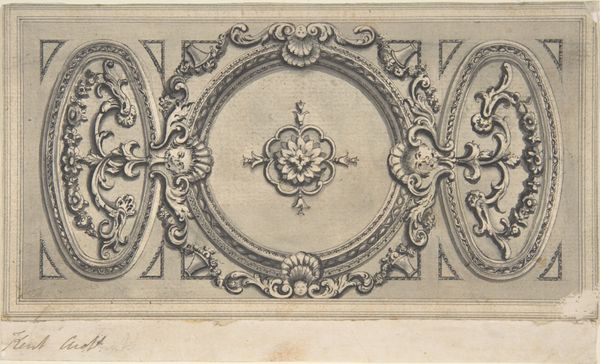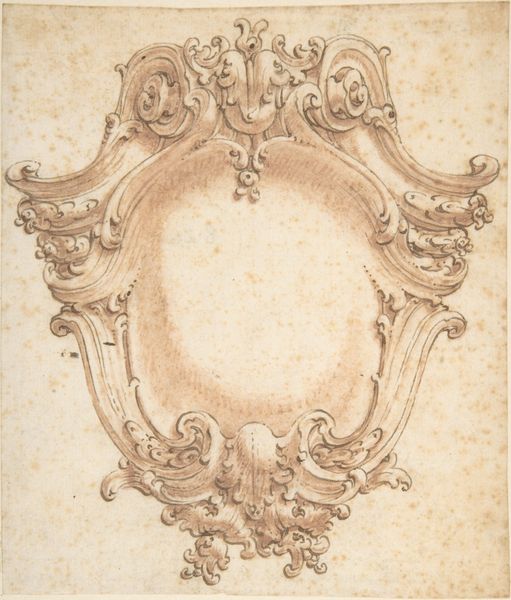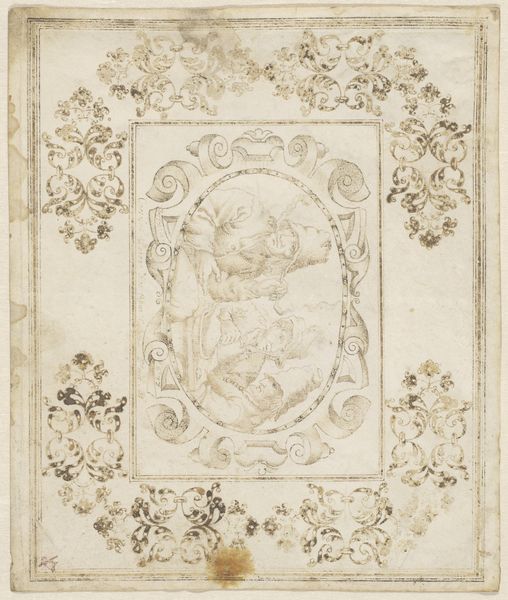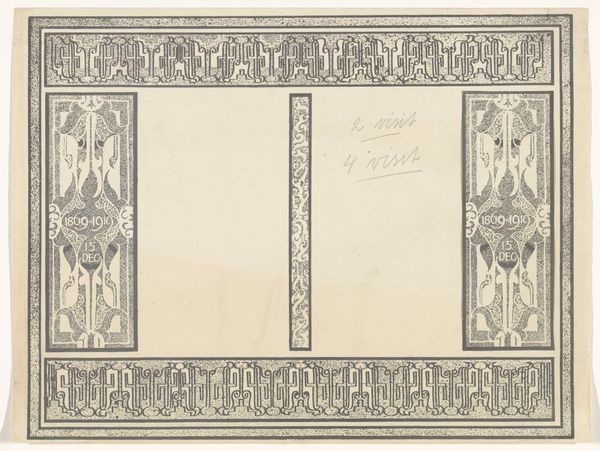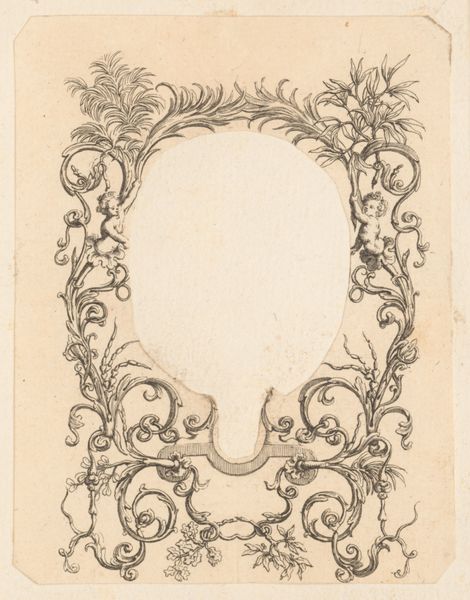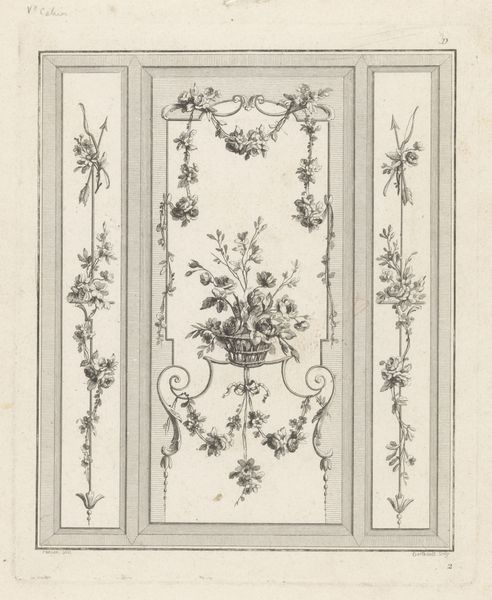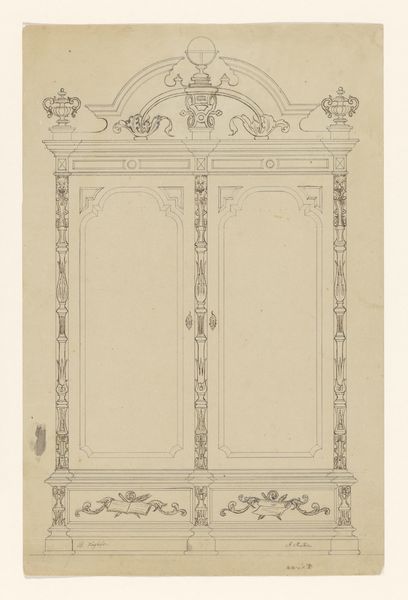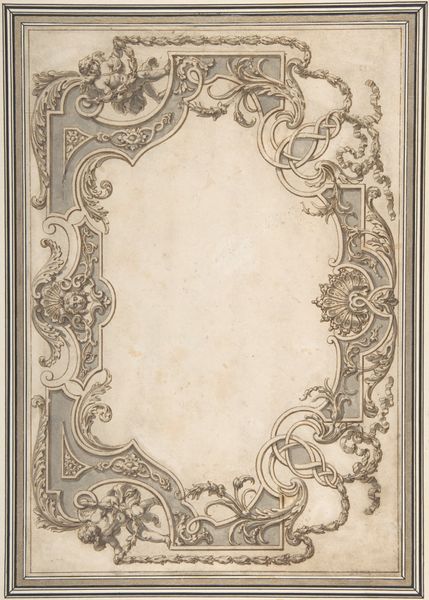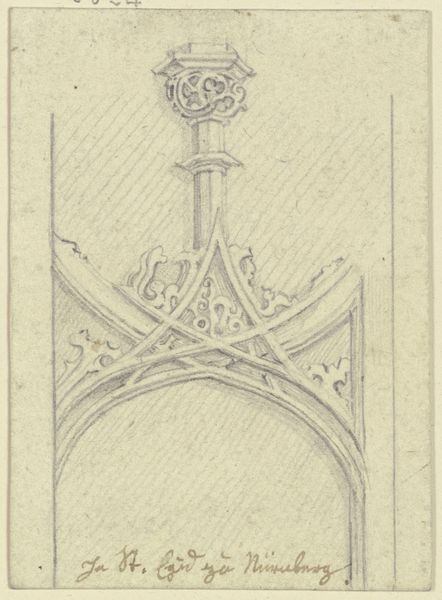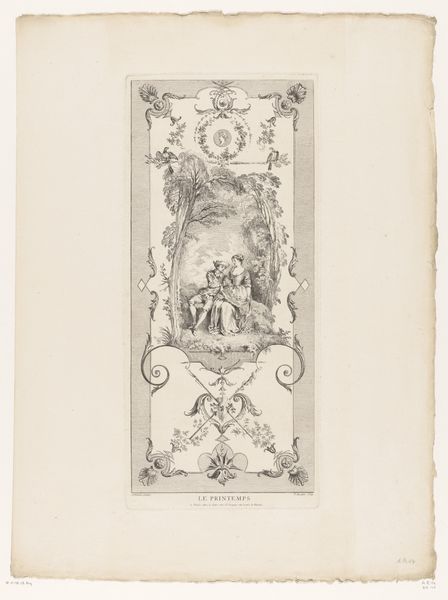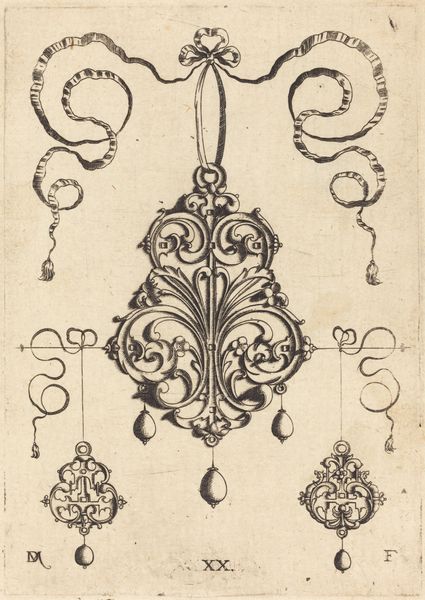
Ontwerp voor ornamenteel graf met cartouche en vier schedels 16th - 17th century
0:00
0:00
cesaredomenichi
Rijksmuseum
drawing, print, engraving
#
drawing
#
medieval
#
allegory
# print
#
old engraving style
#
woodcut effect
#
11_renaissance
#
vanitas
#
repetitive shape and pattern
#
geometric
#
intricate pattern
#
line
#
engraving
Dimensions: height 415 mm, width 256 mm
Copyright: Rijks Museum: Open Domain
Editor: So, here we have “Ontwerp voor ornamenteel graf met cartouche en vier schedels,” or “Design for an ornamental grave with cartouche and four skulls,” from the 16th or 17th century by Cesare Domenichi. It’s an engraving, and it’s striking how ornate and yet… grim it is. What do you see in it? Curator: Grim is one word! I find it deeply evocative. It whispers of vanitas, that artistic nod to the fleeting nature of earthly existence. The skulls are, of course, blunt about it, aren’t they? But consider the cartouche—empty, waiting for a name, a life to be commemorated. Do you feel the tension between the exuberant flourishes and the stark memento mori? It’s like a party thrown in a graveyard. Editor: A graveyard party! I love that. It does feel like there are two voices competing with one another. I didn't really think about the empty cartouche, and its intended use to celebrate one's existence. Curator: Exactly! Domenichi’s line work itself sings. Each swirl, each carefully etched leaf, reminds us of the artistry—the life—poured into even these contemplations of death. Doesn’t the dedication almost soften the blow, giving the deceased some kind of recognition in the afterlife? Editor: Definitely! It makes the thought of passing into the next plane feel celebratory. I hadn't quite made that connection before. So much detail intended for someone who no longer can appreciate the art themselves. Thanks for enlightening me on its possible underlying meanings! Curator: My pleasure! It’s fascinating how much life can be found in depictions of death, isn't it? It makes you really appreciate the meaning behind everything.
Comments
No comments
Be the first to comment and join the conversation on the ultimate creative platform.
